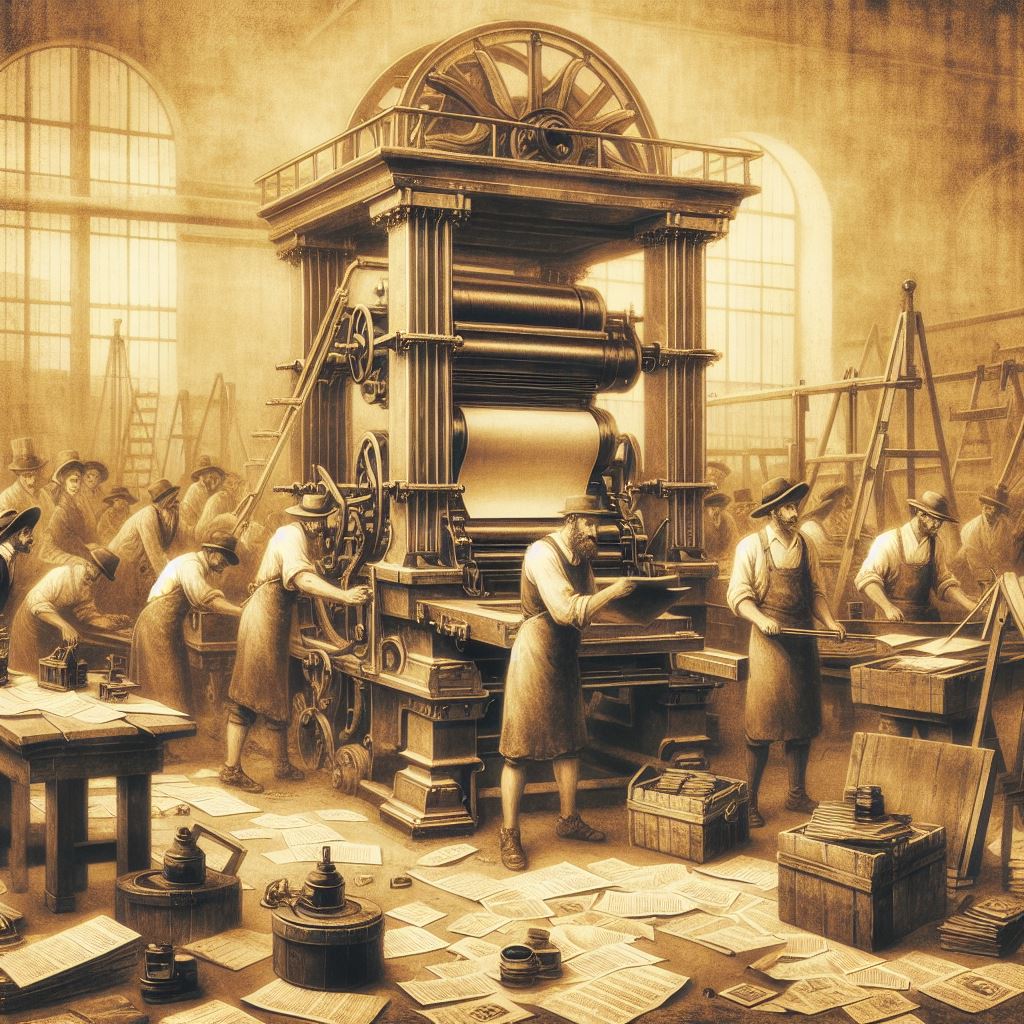The Print Revolution refers to the profound transformation in communication and the dissemination of knowledge that occurred with the advent and widespread use of the printing press. This pivotal moment in human history, which took place in the 15th century, revolutionized the way information was produced, shared, and consumed. Johannes Gutenberg’s invention of the printing press played a central role in this transformative period, paving the way for an unprecedented era of intellectual and cultural growth.
Historical Context
Before the Print Revolution, the reproduction of written material was a laborious and time-consuming process. Scribes manually copied texts by hand, limiting the availability of books and contributing to their high cost. This scarcity of written materials hindered the spread of knowledge, making education and information accessible only to a privileged few.
Johannes Gutenberg’s Printing Press
In the mid-15th century, Johannes Gutenberg, a German inventor, introduced the printing press to the world. His invention combined movable type, oil-based ink, and a mechanical press, allowing for the efficient mass production of books. The movable type, made of metal, could be rearranged and reused, making the printing process faster and more cost-effective.

Impact on Communication
The introduction of the printing press revolutionized communication by democratizing access to information. With the ability to produce books in larger quantities, literature, scientific knowledge, and religious texts became more widely available. This accessibility empowered individuals beyond the aristocracy and clergy to engage with ideas and information, fostering a more informed and intellectually curious society.
Cultural Renaissance
The Print Revolution catalyzed a cultural renaissance, promoting literacy and encouraging the exchange of ideas. The increased availability of books and the dissemination of knowledge across regions facilitated the emergence of new intellectual and artistic movements. The Renaissance, which followed the advent of the printing press, saw a flourishing of art, literature, and scientific inquiry, as scholars and thinkers were able to build upon each other’s work.
Standardization of Language
The printing press played a crucial role in standardizing languages. As texts were reproduced more consistently, linguistic norms were established, contributing to the development of national languages. This standardization not only facilitated communication within regions but also promoted a sense of linguistic identity and cultural cohesion.
Scientific Revolution
The Print Revolution significantly influenced the Scientific Revolution, as scientific knowledge could now be disseminated widely and rapidly. Scientists, researchers, and scholars across different regions could share their findings, accelerating the progress of human understanding. This exchange of ideas laid the groundwork for the development of modern science.
Conclusion
The Print Revolution stands as one of the most transformative periods in human history. Johannes Gutenberg’s invention of the printing press not only democratized access to information but also fueled cultural, intellectual, and scientific advancements. The impact of this revolution is still evident in today’s society, as the printed word continues to shape our understanding of the world. The ability to share information on a mass scale remains a cornerstone of modern communication, and we owe much of this capability to the groundbreaking developments of the Print Revolution.
